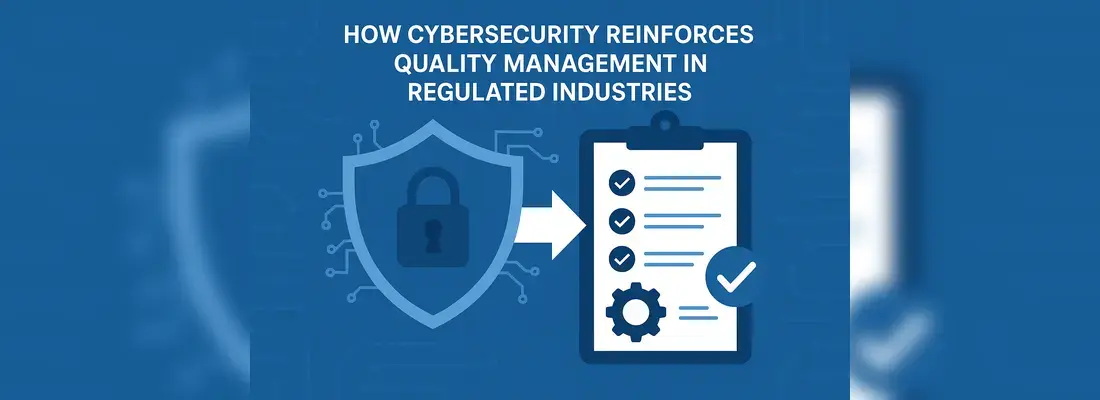Top 10 Trends to Ensure Secure Gaming in 2026
Date: 25 November 2025
.webp?width=1170&name=Gaming_2026_cropped%20(1).webp)
The video game industry has long ceased to be merely entertainment. It's a global market with a turnover of over $250 billion, where millions of players daily entrust their data, money, and time to online platforms. But with the growth in gaming popularity, threats are also rising. DDoS attacks during tournaments, account theft, fraud with in-game currency, personal data leaks — all of it has become a daily reality faced by both players and developers.
2026 promises to be a breakthrough year in gaming platform security. If previously developers could limit themselves to basic antivirus tools and perimeter protection, the situation has now changed dramatically. Hackers are using artificial intelligence to create new exploits, phishing schemes are becoming almost indistinguishable from official communications, and the cost of one successful attack can reach millions.
In this article, we'll examine ten key trends that will define the secure future of gaming in 2026 — from AI protection to zero trust architecture.
1. Artificial Intelligence as Guardian, Not Just a Threat
AI has long ceased to be a tool exclusively in the hands of attackers. In 2026, machine learning systems will become the foundation for real-time anomaly detection. Instead of waiting for a hacker to use a known exploit, AI systems analyse the behaviour of millions of users simultaneously, recognising suspicious patterns — unusual system logins, atypical in-game activity, attempts to manipulate data.
This approach is called behavioural analysis, and it’s far more effective than traditional methods. For example, if a player suddenly shows unrealistic shooting accuracy or moves across the map at inhuman speed, the system instantly notices this and can block the account pending investigation. This is important not only for fighting cheaters but also for detecting account hacking attempts.
2. Zero Trust Architecture Becomes the Standard
The traditional security model was built on a simple principle: there's a perimeter (firewall), inside is safe, outside is dangerous. But modern games are distributed systems with cloud servers, mobile clients, and integrations with dozens of services. In such an environment, there simply is no perimeter.
Zero Trust Security changes the philosophy of protection: no one receives trust by default, even if they're inside the network. Every request is verified, every user is re-authenticated, every transaction is controlled. This means multi-factor authentication for access to critical systems, end-to-end encryption of all data, and constant activity monitoring.
For developers, this means more investment at the design stage, but the return is obvious: even if a hacker breaks one system component, they won't be able to advance further without additional verification. Sometimes companies decide to outsource this part to an external video game development company that has experience and knows new approaches to cybersecurity. For example, Kevuru Games has 13 years in game development and during this time has worked with EA and Bandai Namco. So obviously, the process of building secure architecture will take them less time than newcomers to the industry.
3. Fighting Next-Generation Cheating
Cheaters evolve faster than anti-cheat systems. In 2026, aimbots based on computer vision are emerging that analyse screen images and control characters with superhuman accuracy. Traditional detection methods that look for modified game files or suspicious processes in memory are powerless here — because such cheats work outside the game itself, as separate programs.
Therefore, developers are moving to machine-learning anti-tamper solutions. These systems don't just look for known cheats — they learn to recognise them by indirect signs. Too stable shooting frequency? Suspicious. Perfect aiming in high-ping conditions? Also strange. The new generation of anti-cheat analyses thousands of parameters simultaneously, constantly adapting to new threats.
4. Personal Data Protection Becomes a Priority
GDPR violations can cost a company up to 4% of annual revenue. For a large studio, that's tens of millions of euros in fines. But it's not just about money — players are becoming increasingly aware of their rights and actively refusing games that don't respect their privacy.
In 2026, the standard becomes end-to-end encryption of all communication between client and server, data protection not only during transmission but also at rest (in databases), regular security audits involving independent experts. Developers are also implementing the principle of data minimisation: instead of collecting all possible information about a player, they collect only what's actually needed for the game to function.
5. Cloud Gaming Server Protection
Cloud gaming is the future of the industry, but it's also a new attack surface. When a game runs not on the player's device but on a remote server, any vulnerability of that server becomes critical. DDoS attacks can stop thousands of players simultaneously, a data leak from cloud storage can compromise millions of accounts.
Therefore, leading studios are investing in AI-driven security monitoring for clouds — systems that track suspicious activity in real-time and automatically block attacks. Automated patching is also used: vulnerabilities are fixed within minutes of detection, without the need for manual intervention. And CDN networks with geographically distributed servers make DDoS attacks significantly more expensive for attackers.
6. Blockchain for Protecting In-Game Assets
NFTs in games aren’t just a trend but a real tool for protecting digital property. When a rare item or skin is recorded on the blockchain, it's impossible to forge or delete without a trace. This is especially important for games with developed internal economies, where the value of virtual items can reach thousands of dollars.
But blockchain isn't just about NFTs. It's also about transaction transparency, where every purchase and sale is recorded forever and can be verified by anyone. This reduces fraud, makes the market fair, and gives players real control over their assets. In 2026, we'll see games where items can be freely transferred between different titles or even sold on external marketplaces without the risk of account blocking.
7. Protection Against Phishing and Social Engineering
Most successful hacks occur not through technical vulnerabilities but through the human factor. Phishing emails posing as official messages from developers, fake login sites, scammers in game chat offering "free currency" — all of this works surprisingly effectively.
Developers are implementing several levels of protection: mandatory two-factor authentication that can no longer be bypassed; real-time phishing detection systems that analyse links and warn players about dangerous sites; educational programs directly in the game — short tips on how to recognise fraud. Browser fingerprinting is also improving, allowing systems to detect when a user logs in from an unfamiliar device or location and requests additional confirmation.
8. Protecting Intellectual Property from Piracy
Piracy costs the industry billions annually, and AI makes it even easier. Deepfake technologies allow copying graphic resources, and automated scrapers collect game content for resale. In response, developers use next-generation DRM — not just license verification but dynamic protection that constantly changes.
Blockchain-based authorship verification systems are also emerging, where each resource has a digital certificate that's impossible to forge. This helps not only against pirates but also in cases of copyright disputes — you can accurately prove who created a particular asset and when.
9. Protection Against Insider Threats
Not all attacks come from outside. Sometimes the greatest danger comes from employees or contractors who have access to critical systems. There have been cases where developers stole source code before being fired or leaked player databases to competitors.
Therefore, modern studios implement strict access control: the principle of least privilege (everyone has access only to what they need for work), audit logs of all actions with sensitive data, DLP (Data Loss Prevention) systems that block attempts to remove files beyond the corporate network. And of course, mandatory NDAs with real legal consequences for violations.
10. Automating Incident Response
When an attack occurs, response speed is critical. Every minute of downtime can cost thousands of dollars in lost revenue, and every hour of undetected data leak increases legal risks. Therefore, leading studios are moving to automated incident response — systems that automatically detect threats, isolate compromised components, restore operations from backups, and notify the security team.
This doesn't mean people become unnecessary — on the contrary, they're freed from routine and can focus on analysing complex incidents and strategic planning. AI takes on rapid response, while experts handle investigating attack causes and improving defences.
Conclusion
Security in the gaming industry of 2026 is no longer just an add-on but the foundation of a successful project. Players are becoming more demanding, regulators stricter, and hackers more inventive.
The ten trends we've discussed aren't science fiction but a reality that's already forming now. Artificial intelligence, zero trust, data protection, blockchain — all of this is working today in the industry's best projects. And tomorrow it will become the standard for everyone who wants to stay in the market. So the question isn't whether you need to invest in security, but how quickly you're ready to do it.




.webp)


.webp)
